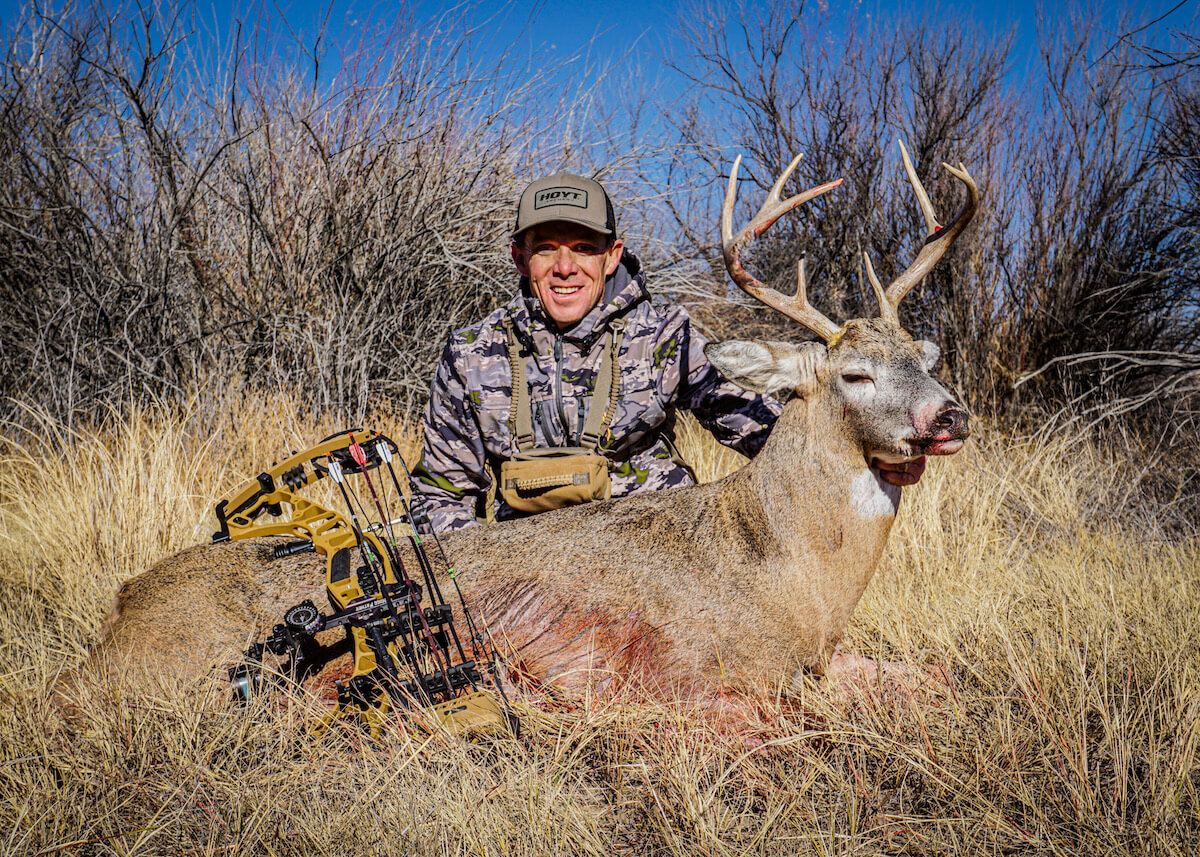
A new-for-2023 compound that promises precision, strength, quietness, and speed, Hoyt’s VTM 31 is bow-building perfection.
I had a 2022 love affair with a pair of Hoyt bows — the Ventum Pro 30 and Carbon RX-7 30 — both proved their salt repeatedly on the range and in the field. That dynamic duo treated my freezer well over the year. During the spring, the Ventum Pro anchored a handful of turkeys, hogs, and a bear, and during the fall months, the RX-7 put Easton’s into the lungs of a pronghorn, elk, and white-tailed deer.
Often, when you fall head over heels for a bow, or in this case, a pair of bows, it’s hard to make a change. It didn’t use to be, but modern-day compounds are remarkable. They are capable of insane speeds and pinpoint accuracy, and most are built like tanks, and every year, I wonder if a manufacturer’s shiny new penny will trump its predecessor.

VTM 31 First Impressions
The new-for-2023 Bourbon color is sexy. Hoyt bows always have excellent eye appeal, which comes from the innovative riser designs of its aluminum and carbon rigs, but this beauty created an actual jaw-drop when I pulled it from its box.
The Ventum Pro riser is back, which is suitable for those who demand a balanced platform that works in harmony with the limbs and cams to thwart post-shot noise and bow oscillation. Other returning features from the 2022 Ventum Pro include the HBX Pro Cams, VitalPoint Grip, and Short Stop Stabilizer.
Initial inspection of the VTM 31 showed no dings, dents, nicks, scratches, or signs of wear, and I did notice the bow felt a tad heavier, which isn’t a bad or good thing but rather a notice. The VTM 31 also looked a tag longer, and after a glance at its specs, I discovered my noticings were right on both accounts — the VTM 31 measures 30 5/8 inches between the axles and is branded with a no-accessories-attached weight of 4.6 pounds.
Setup & Tune
There isn’t much I enjoy more than setting up a new compound bow, and the VTM 31 made the process even more enjoyable. Hoyt’s In-Line System makes accessory attachment a breeze and ensures maximum lock-down of the sight and rest. Fitted with brackets that resemble a Picatinny system used on AR platforms, Hoyt goers can attach certain sights and rests directly to the riser without needing mounting blocks. Not only does this cut down on extra weight, but testing has proved that this direct riser-to-accessory bond quiets the VTM 31 even further.

My sight of choice was Spot-Hogg’s new-for-2023 Fast Eddie PM, which deserves an in-depth review of its own. Maybe later, but I’ll tell you the mounting block on this sight has been replaced with the Pic Mount bar, which allows the sight to attach directly to the front of the VTM 31’s riser. My rest of choice, at least for me, is always a no-brainer — QAD’s Integrate MX. Like the sight, the rest attaches directly to the back of the riser, which creates perfect alignment and complete tunability.
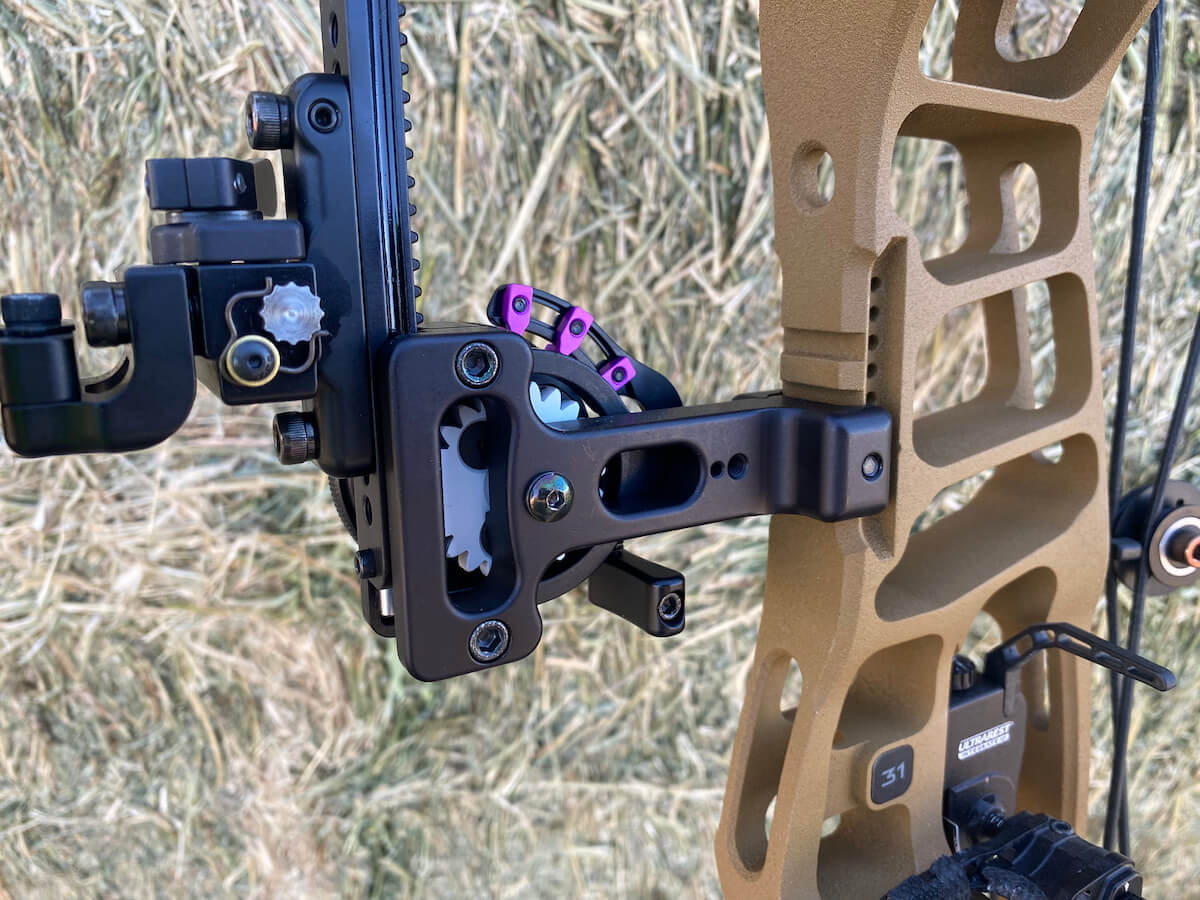
An immediate notice during the setup process ended up being my favorite feature on Hoyt’s new aluminum riser bow. Dubbed the Drop Cord Slot, this simple yet sophisticated improvement to the riser’s design allows the user to pass the drop-away cord through the riser via a slit, keeping the setup clean and preventing tangle.
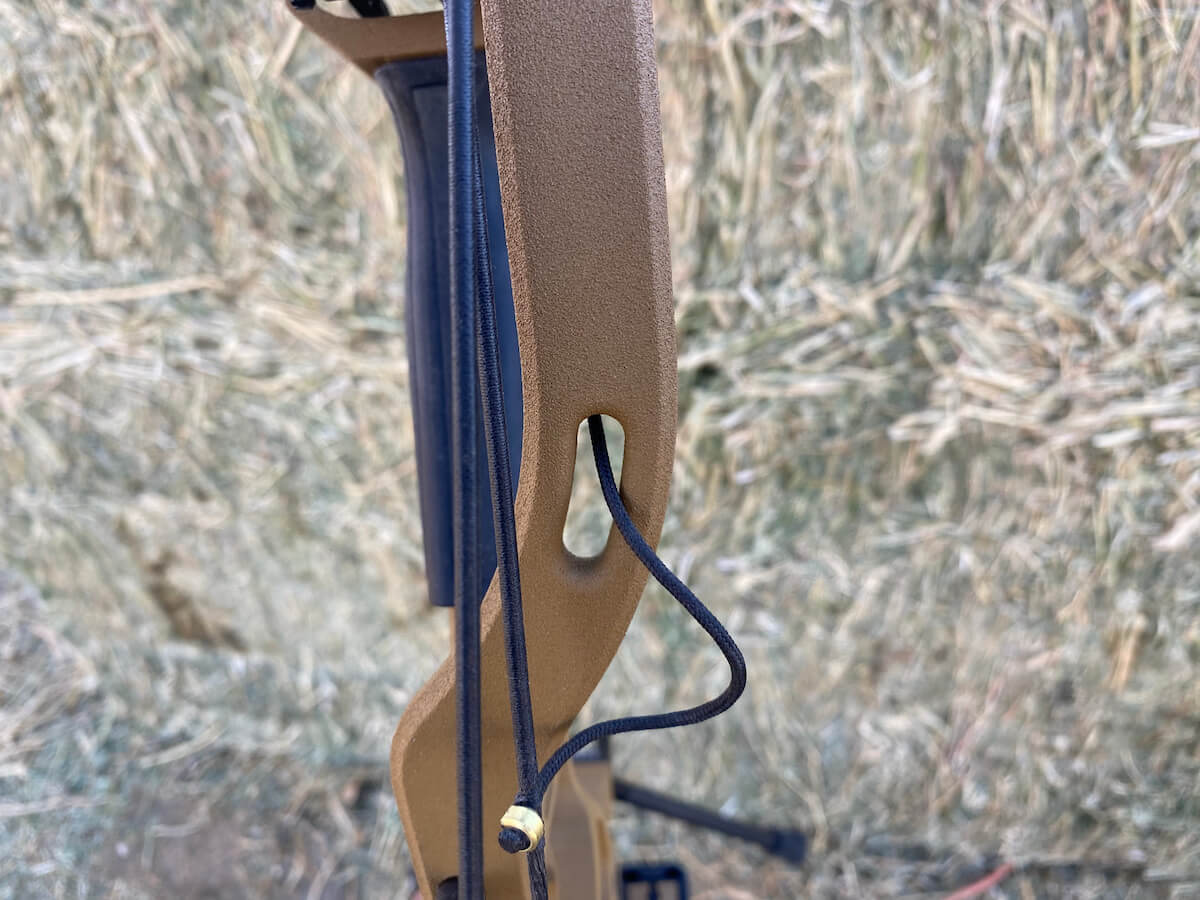
Attachment of all accessories was a breeze, and the limb bolts turned without chatter or popping, a great sign of a perfect marriage between the riser and limbs. The HBX Pro Cams are adjustable between 25 and 30 inches in half-inch increments, and a guide for exact settings is available on the upper left (inside) limb. I set my cams to the letter C (29-inch) draw setting, and with the limb blots turned in, the 70-pound (peak weight) bow measured a draw weight of 72.42 on the Luoyer Digital Bow Scale.
Before the paper tune process, I like to get familiar with a new bow; something I recommend every archer do. As good as modern-day strings are, stretch is still common, and you must develop a consistent grip and anchor point. Paper tuning is pointless if you don’t take the time to shoot the strings and cables in and get a consistent fit and feel with your bow.
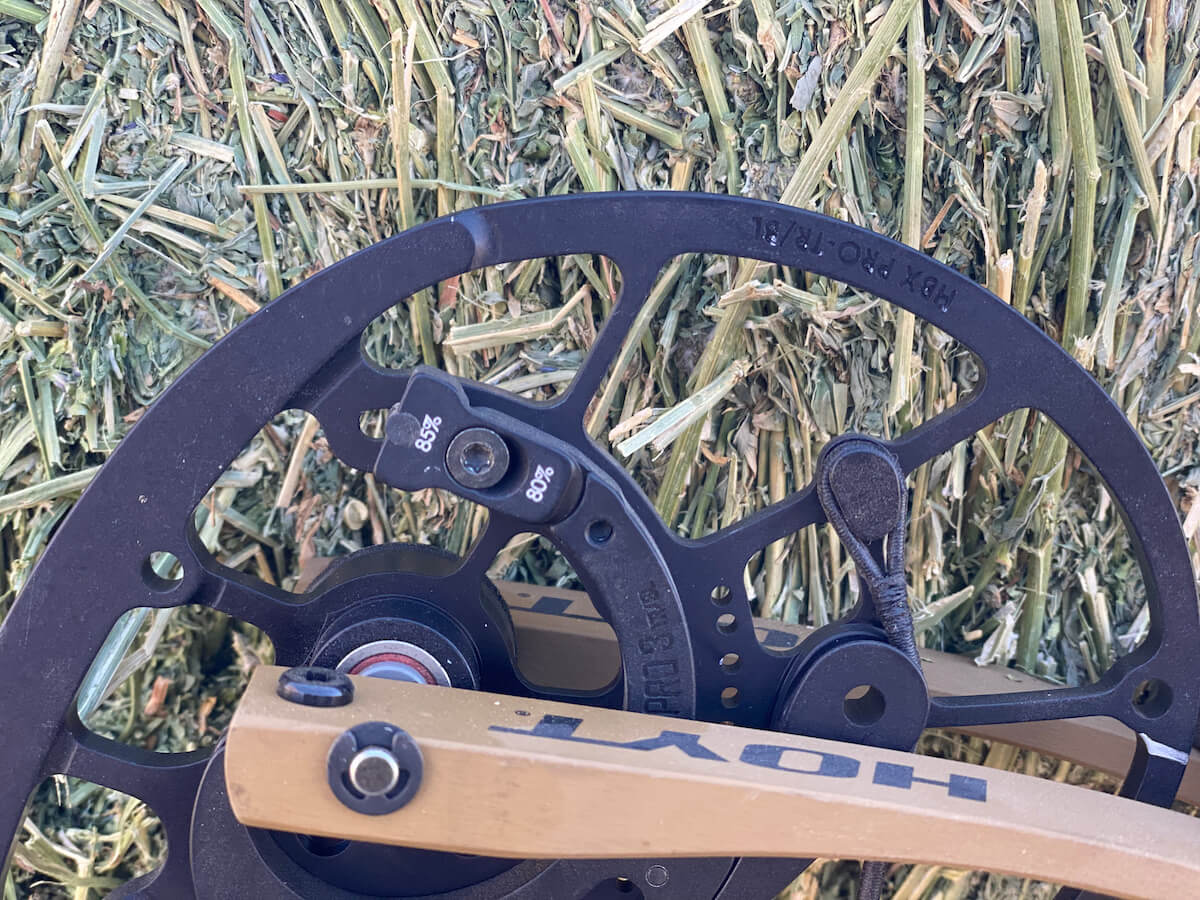
I’m a fan of Hoyt’s VitalPoint Grip. I love the Versaflex material, and regardless of the outside conditions, my hand finds consistent placement, and in archery, consistency leads to accuracy. The grip is thin, flat-backed, and feels excellent in hand. The draw cycle is smooth throughout, and the transition to the bow’s customizable 80 or 85 percent letoff (loosen a set screw and slide the cable stop) comes smoothly. No humps or bumps allow the shooter to crawl into their pair (always two) of anchor points. The bow is a rock at full draw, and I appreciate the padded cable-stop arms as opposed to limb stops. I like a bow to have a valley, and this one has one, though it isn’t sloppy or spongy.
For a bow that doesn’t quite measure a full 31 inches between the axles, the VTM 31 sits in hand like a rock. I credit this, of course, to the bow’s design, especially the addition of multiple in-line accessory mounts. At the shot, the VTM feels fast, but there is zero post-shot noise or vibration, and this is, without question, Hoyt’s quietest bow to date. I will take a calm, accurate bow over one with itchy cams, a rigorous draw cycle, and blazing speed.
I noted the bow felt fast, and it was. Rated at 334 fps at max draw length and max poundage, my Easton Axis Long Range 4MM’s with aluminum Half-Out inserts and 100-grain SEVER Match Grade field points tipped the scale at 428 and hit a three-arrow average fps rating of 295. Speed without sacrifice, yes, I will take it every single time.

After putting 125 arrows through the VTM 31 and dialing my Spot-Hogg Fast Eddie Triple Stack out to 100 yards, I moved to the paper tuner. I knew the first shot would be close; I was grouping well to 100 yards with three arrows and wasn’t detecting vertical or horizontal nock travel. The first arrow through paper created a slight nock right and point left tear, which required moving QAD’s micro-adjustable Integrate MX drop-away two .0019″ clicks to the left. The second arrow through paper was bullet-hole perfect.
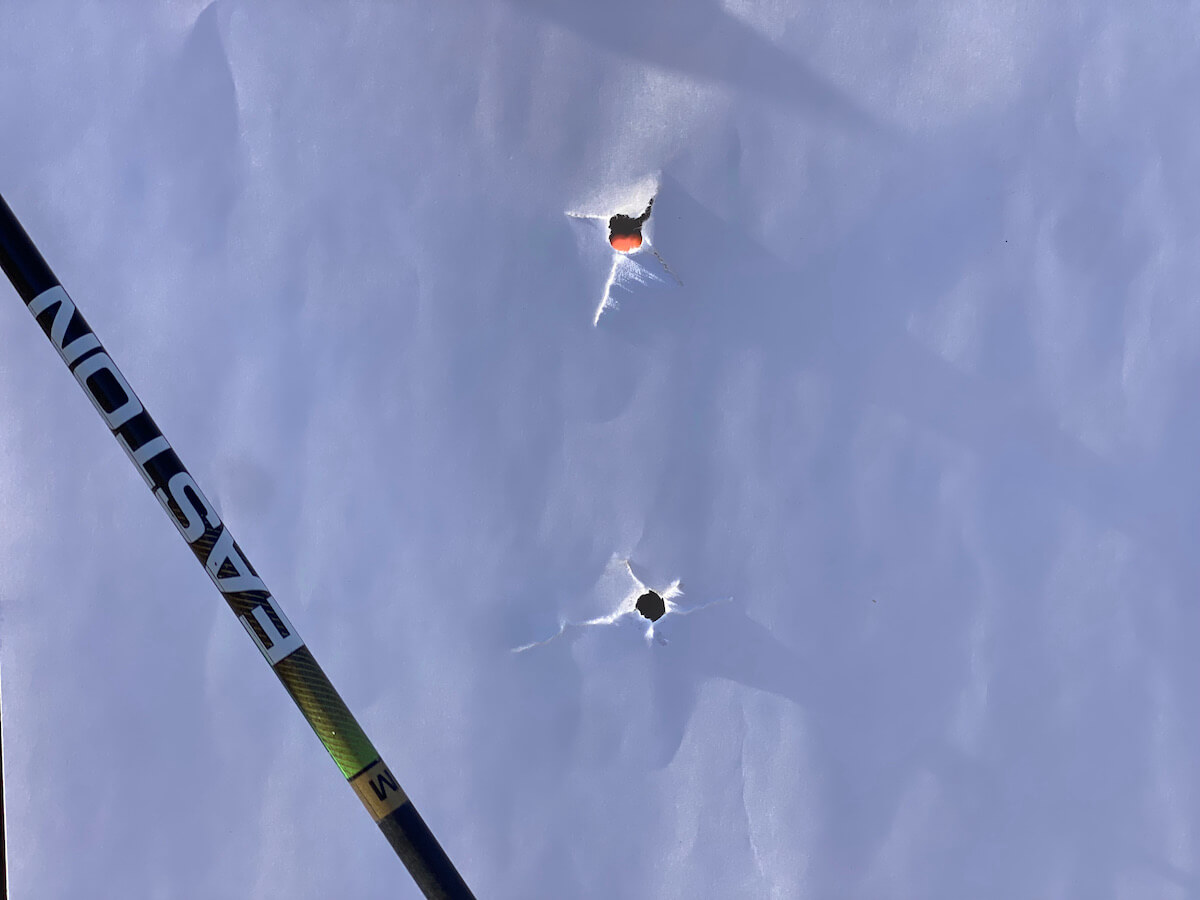
I do recommend paper-tuning every single arrow you shoot. The process takes time, but it will hone your shooting technique and familiarize you with your equipment. It’s common for shooters to fire a few arrows and get perfect tears and then discover one or two that produce imperfect tears. Usually, all that’s required is a quick nock tune (rotate the nock on the string), which will be enough to help the spine align the arrow and get an exact tear.
Field Test
After getting the VTM 31 set and rolling, I got this Bourbon beauty into the field, and on the ninth morning of hunting Colorado river-bottom whitetails, she delivered a 12-ring shot on a 21-yard buck. There was zero wind, and the buck didn’t react to the shot at all, and with half his heart taken out by a SEVR 1.5 broadhead, his death sprint was short.

Hoyt’s VTM 31 is a quiet, fast, accurate, and reliable bow that gets a five-star rating from this bowhunter, and if you decide this is the vertical rig for you in 2023, I think you’ll agree it’s the bee’s knees.
For more information, visit Hoyt’s website
